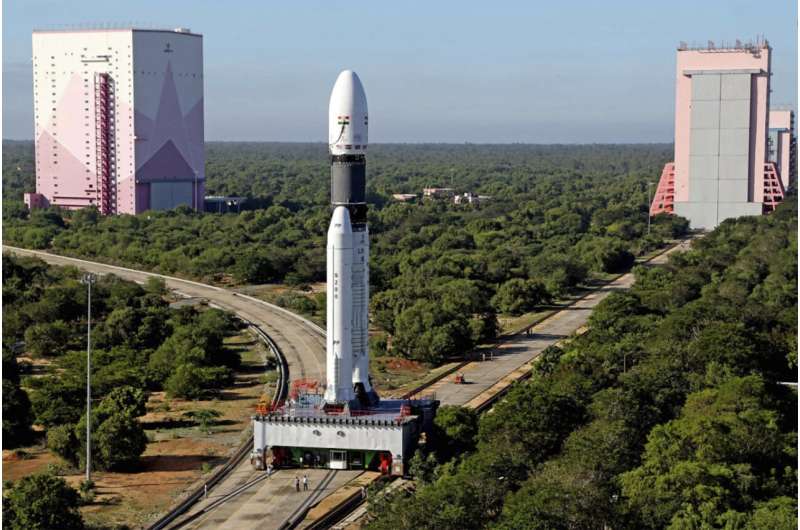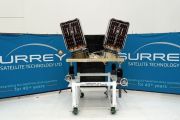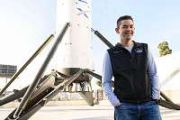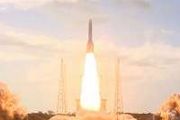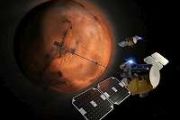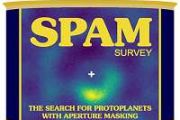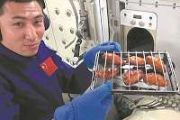
Copernical Team
New way to make telescope mirrors could sharpen our view of the universe
 Researchers have developed a new way to use femtosecond laser pulses to fabricate the high-precision ultrathin mirrors required for high-performance x-ray telescopes. The technique could help improve the space-based x-ray telescopes used to capture high-energy cosmic events involved in forming new stars and supermassive black holes.
"Detecting cosmic x-rays is a crucial piece of our explor
Researchers have developed a new way to use femtosecond laser pulses to fabricate the high-precision ultrathin mirrors required for high-performance x-ray telescopes. The technique could help improve the space-based x-ray telescopes used to capture high-energy cosmic events involved in forming new stars and supermassive black holes.
"Detecting cosmic x-rays is a crucial piece of our explor Chang'E-5 mission returned samples shed new light on our moon's surface makeup and geologic history
 Active volcanic activity helped create the moon's surface minerology as recently as 2 billion years ago, leaving an iron-rich and high-calcium surface of basalts geographically younger than the lunar geology community previously thought, according to a study that analyzed soil samples brought back as part of the Chang'E - 5 (CE-5) mission in 2020.
A team of researchers led by Prof. LI Chun
Active volcanic activity helped create the moon's surface minerology as recently as 2 billion years ago, leaving an iron-rich and high-calcium surface of basalts geographically younger than the lunar geology community previously thought, according to a study that analyzed soil samples brought back as part of the Chang'E - 5 (CE-5) mission in 2020.
A team of researchers led by Prof. LI Chun Chang'e-5 samples reveal how young volcanism occurred on the Moon
 A new study led by Prof. CHEN Yi from the Institute of Geology and Geophysics of the Chinese Academy of Sciences (IGGCAS) provides an answer to the question of how young volcanism occurred on the Moon.
The researchers found that mantle melting-point depression due to the presence of fusible, easily melted components could generate young lunar volcanism.
Their findings were published
A new study led by Prof. CHEN Yi from the Institute of Geology and Geophysics of the Chinese Academy of Sciences (IGGCAS) provides an answer to the question of how young volcanism occurred on the Moon.
The researchers found that mantle melting-point depression due to the presence of fusible, easily melted components could generate young lunar volcanism.
Their findings were published Ascent satellite marks end of mission objectives
 The Air Force Research Laboratory's small satellite named Ascent has completed all of its mission objectives and is performing extended operations to characterize the survivability of the commercial-off-the-shelf, or COTS, bus electronics in the geosynchronous Earth orbit, or GEO, space environment.
Ascent, launched Dec. 7, 2021, is a 12-unit CubeSat developed within the AFRL Space Vehicle
The Air Force Research Laboratory's small satellite named Ascent has completed all of its mission objectives and is performing extended operations to characterize the survivability of the commercial-off-the-shelf, or COTS, bus electronics in the geosynchronous Earth orbit, or GEO, space environment.
Ascent, launched Dec. 7, 2021, is a 12-unit CubeSat developed within the AFRL Space Vehicle Designing the trajectory of a microsatellite swarm from the macro-micro perspective
 As an emerging multi-satellite cooperative flight mode, microsatellite swarm has become an important future research issue for distributed space systems due to their advantages of low cost, rapid response, and collaborative decision-making. To address the coordination of swarms for autonomous agents, a probabilistic guidance approach has been investigated, which contained sub-swarms with differe
As an emerging multi-satellite cooperative flight mode, microsatellite swarm has become an important future research issue for distributed space systems due to their advantages of low cost, rapid response, and collaborative decision-making. To address the coordination of swarms for autonomous agents, a probabilistic guidance approach has been investigated, which contained sub-swarms with differe US Space Command to Transfer Space Object Tracking to Department of Commerce
 Right now, U.S. Space Command tracks more than 47,000 objects in space. But there are plans to transfer that responsibility to the Department of Commerce, an effort that will allow Spacecom to focus more on what's happening in space rather than just on the tracking of objects there, the Spacecom commander said.
"My current priority is to invest in space domain awareness. To ... gain a bett
Right now, U.S. Space Command tracks more than 47,000 objects in space. But there are plans to transfer that responsibility to the Department of Commerce, an effort that will allow Spacecom to focus more on what's happening in space rather than just on the tracking of objects there, the Spacecom commander said.
"My current priority is to invest in space domain awareness. To ... gain a bett ISRO launches 36 OneWeb satellites
 OneWeb has confirmed the successful deployment of 36 satellites launched by NewSpace India Limited (NSIL), from the Satish Dhawan Space Centre (SDSC- SHAR) in Sriharikota, India. This launch by ISRO and NSIL is one of the biggest commercial orders by India's premier space organization, and the first using the LVM3 rocket.
The lift-off took place on Sunday, 23rd October 2022 at 00.07hrs loc
OneWeb has confirmed the successful deployment of 36 satellites launched by NewSpace India Limited (NSIL), from the Satish Dhawan Space Centre (SDSC- SHAR) in Sriharikota, India. This launch by ISRO and NSIL is one of the biggest commercial orders by India's premier space organization, and the first using the LVM3 rocket.
The lift-off took place on Sunday, 23rd October 2022 at 00.07hrs loc China completes test of vacuum liquid oxygen-methane rocket engine
 China has completed a test of its largest-thrust vacuum liquid oxygen-methane engine, which was designed for use on a commercial rocket, the engine maker said Thursday.
Developed by the Chinese private rocket company LandSpace, the engine, coded TQ-15A, has a vacuum thrust of up to 836 kilonewtons. It will be used as the second-stage main engine for the second batch of the company's ZQ-2 r
China has completed a test of its largest-thrust vacuum liquid oxygen-methane engine, which was designed for use on a commercial rocket, the engine maker said Thursday.
Developed by the Chinese private rocket company LandSpace, the engine, coded TQ-15A, has a vacuum thrust of up to 836 kilonewtons. It will be used as the second-stage main engine for the second batch of the company's ZQ-2 r NASA to increase Artemis fleet, orders 3 more crew capsules
 NASA is furthering its plans to set up a space station on the moon and send the first astronauts to Mars by ordering three more crew capsules for its Artemis mission.
The mission's primary contractor Lockheed Martin announced the plans for three additional Orion spacecraft on Thursday. The cost of the three capsules is about $1.99 billion.
The new Orion crew capsules will be used
NASA is furthering its plans to set up a space station on the moon and send the first astronauts to Mars by ordering three more crew capsules for its Artemis mission.
The mission's primary contractor Lockheed Martin announced the plans for three additional Orion spacecraft on Thursday. The cost of the three capsules is about $1.99 billion.
The new Orion crew capsules will be used India launches 36 internet satellites delayed by Ukraine war
